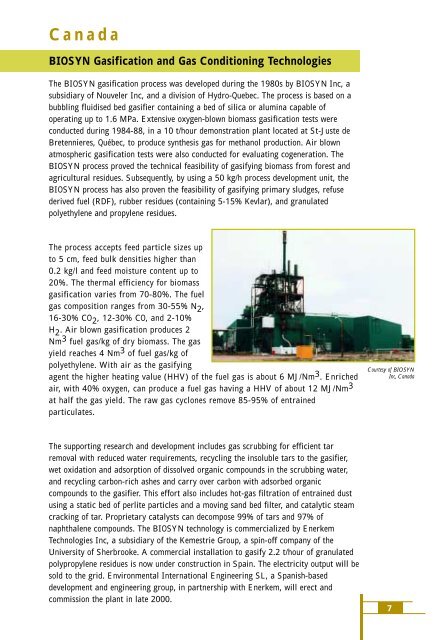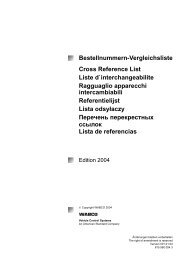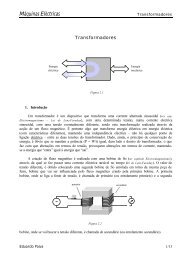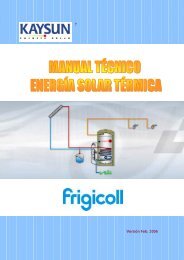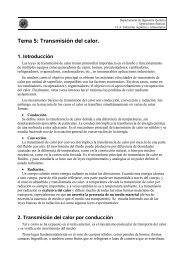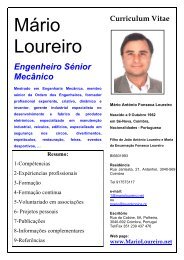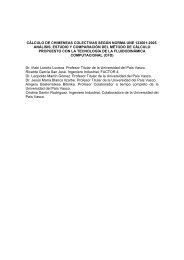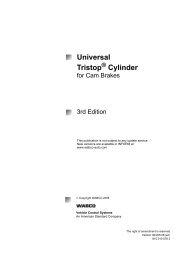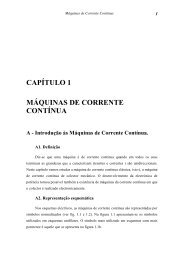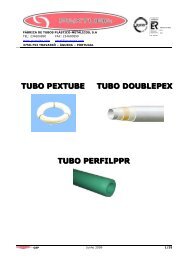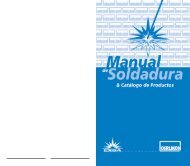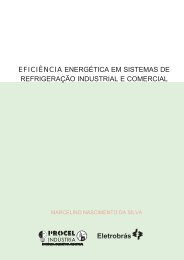Thermal Gasification of Biomass Introduction
Thermal Gasification of Biomass Introduction
Thermal Gasification of Biomass Introduction
You also want an ePaper? Increase the reach of your titles
YUMPU automatically turns print PDFs into web optimized ePapers that Google loves.
CanadaBIOSYN <strong>Gasification</strong> and Gas Conditioning TechnologiesThe BIOSYN gasification process was developed during the 1980s by BIOSYN Inc, asubsidiary <strong>of</strong> Nouveler Inc, and a division <strong>of</strong> Hydro-Quebec. The process is based on abubbling fluidised bed gasifier containing a bed <strong>of</strong> silica or alumina capable <strong>of</strong>operating up to 1.6 MPa. Extensive oxygen-blown biomass gasification tests wereconducted during 1984-88, in a 10 t/hour demonstration plant located at St-Juste deBretennieres, Québec, to produce synthesis gas for methanol production. Air blownatmospheric gasification tests were also conducted for evaluating cogeneration. TheBIOSYN process proved the technical feasibility <strong>of</strong> gasifying biomass from forest andagricultural residues. Subsequently, by using a 50 kg/h process development unit, theBIOSYN process has also proven the feasibility <strong>of</strong> gasifying primary sludges, refusederived fuel (RDF), rubber residues (containing 5-15% Kevlar), and granulatedpolyethylene and propylene residues.The process accepts feed particle sizes upto 5 cm, feed bulk densities higher than0.2 kg/l and feed moisture content up to20%. The thermal efficiency for biomassgasification varies from 70-80%. The fuelgas composition ranges from 30-55% N 2 ,16-30% CO 2 , 12-30% CO, and 2-10%H 2 . Air blown gasification produces 2Nm 3 fuel gas/kg <strong>of</strong> dry biomass. The gasyield reaches 4 Nm 3 <strong>of</strong> fuel gas/kg <strong>of</strong>polyethylene. With air as the gasifyingagent the higher heating value (HHV) <strong>of</strong> the fuel gas is about 6 MJ/Nm 3 . Enrichedair, with 40% oxygen, can produce a fuel gas having a HHV <strong>of</strong> about 12 MJ/Nm 3at half the gas yield. The raw gas cyclones remove 85-95% <strong>of</strong> entrainedparticulates.Courtesy <strong>of</strong> BIOSYNInc, CanadaThe supporting research and development includes gas scrubbing for efficient tarremoval with reduced water requirements, recycling the insoluble tars to the gasifier,wet oxidation and adsorption <strong>of</strong> dissolved organic compounds in the scrubbing water,and recycling carbon-rich ashes and carry over carbon with adsorbed organiccompounds to the gasifier. This effort also includes hot-gas filtration <strong>of</strong> entrained dustusing a static bed <strong>of</strong> perlite particles and a moving sand bed filter, and catalytic steamcracking <strong>of</strong> tar. Proprietary catalysts can decompose 99% <strong>of</strong> tars and 97% <strong>of</strong>naphthalene compounds. The BIOSYN technology is commercialized by EnerkemTechnologies Inc, a subsidiary <strong>of</strong> the Kemestrie Group, a spin-<strong>of</strong>f company <strong>of</strong> theUniversity <strong>of</strong> Sherbrooke. A commercial installation to gasify 2.2 t/hour <strong>of</strong> granulatedpolypropylene residues is now under construction in Spain. The electricity output will besold to the grid. Environmental International Engineering SL, a Spanish-baseddevelopment and engineering group, in partnership with Enerkem, will erect andcommission the plant in late 2000.7


